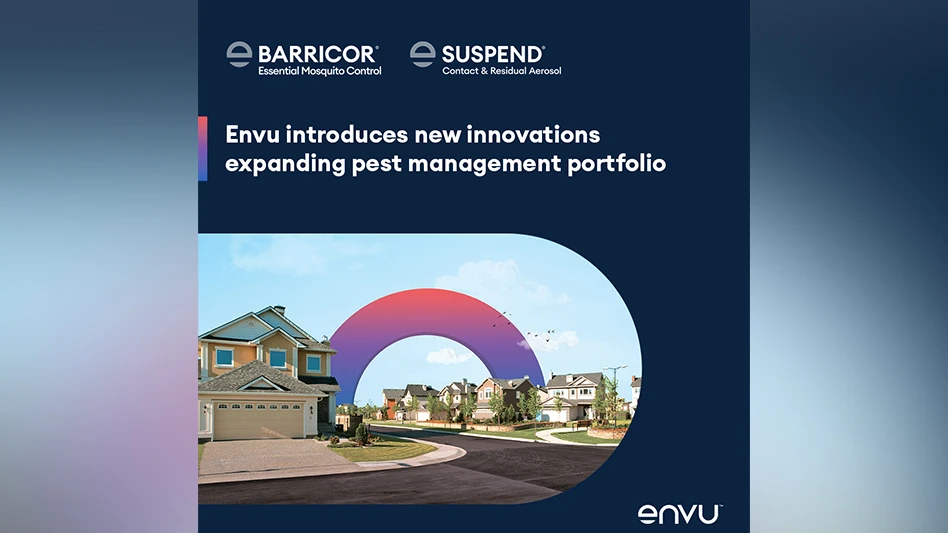The most effective, long-term way to manage rodents is through the implementation of an integrated pest management (IPM) program, defined by the National Pest Management Association (NPMA) as “a process involving common sense and sound solutions for controlling pests.” The focus is on finding the best—not the simplest—strategy for a pest problem and implements a three-part practice: inspection, identification, and treatment.
The inspection not only seeks to determine any pest presence, it is intended to check for any conducive pest conditions, such as lack of sanitation—both internal and external, need for exclusion (sealing of gaps and cracks, repairing doors, etc.), excessive weeds or other harborage areas, etc. Once any present pests are identified, “treatment” then includes the correction or conducive conditions as well as placement of any needed mechanical and/or chemical controls.
While rodenticide baits have traditionally been the primary tool for chemical treatments, studies have shown that rats can not only become resistant to certain active ingredients in toxic baits, they can learn to avoid them altogether. The aversion can be caused by a rodent ingesting the poison but only enough to fall ill, not die—which can cause them to avoid consuming the bait again. Other rats that see another fall ill also can cause this bait shyness. Additionally, there can be a “rebound effect” following the initial decline in rodent populations. This is, in part, because the remaining rodents have plentiful food and harborage enabling survival and rapid reproduction.
Integrating a contraceptive bait with the rodent IPM program can eliminate the rebound effect, as it treats more than just the individual rat, it targets the entire rat population. Without having to respond to population spikes, the PMP can focus on rodent prevention and maintenance instead.
Although Missouri Pest Consultants Owner Terry Hoselton has found contraceptive baiting to be extremely effective, it is critical that it be integrated with an IPM program. “It forces you to use your IPM skills,” he said. “The product can’t do anything alone; it needs help and the only way to get it is through IPM.
“Rats really are pretty smart,” Hoselton added. “They’re crafty; you just have to outcraft them." Outcrafting rat means ensuring that the facility or area being treated is inspected for conducive conditions and the customer compelled to correct them. When using the product at a park, Hoselton said he made them pressure wash, rat proof the trash cans, and clean up the area. He then conducted weekly inspections to ensure sanitation remained at a high level. It is important to remove all other feeding opportunities, he said, “There’s no grey area. You need to make it their only option.”
Hoselton also can attest to the absence of a rebound effect with the contraceptive bait. After baiting all the burrows for three weeks, there was no increase in the rodent population, he said. When he then added rodenticide baits, they took to it readily to rodenticide and it was fast-acting, he said, adding, “I picked up a lot of rats.”
“I use fertility control as another tool in my arsenal in combating roof rats,” said Avant-Garde Pest Management President Mick Fetty. “It has greatly enhanced the effectiveness of my approach to eliminating roof rats from my clientele, and can be used with my current trapping and exclusion program.” Once the effect of the contraceptive is working, he said, the population seems to be only the larger, adult rats that are not producing offspring.
Fetty also has had success using fertility interruption as a stand-alone method in areas where the customer does not want the use of traps or rodenticides. One customer had such a large infestation of roof rats that they had stripped his trees of leaves and were beginning to strip the bark. “On my first inspection, which was midday, you could see and hear them running through the back yard,” he said. With the fertility control bait immediately accepted – and requiring twice a month refilling throughout the first few months, he said, “Within four months we saw less consumption, and four months later, we saw only a slight amount of consumption, and no rats have been heard or observed by my client.”
Contraceptive Bait Placements. Proper placement of the fertility control baits is also important for efficacy. For a residential property which was overrun with rats, PMP Becky Wade installed two stations in the most conducive areas. “Two weeks later there was consumption and the rats had created a path to the feeding stations—the next two weeks even more consumption.
By two months after the installation, the homeowner had observed no more youth or babies. Although the solution froze once winter set in, rats still fed on it, chewing through the container to get every last drop. By March, the rodent sightings were greatly reduced and within a year, sightings had become very rare. Placements were continued for a total of 18 months.
Not only did the application eliminate this homeowner’s problem, “it is important to recognize that this one homeowner was controlling rats at the two adjacent properties at the very least,” Wade said.
With the success Wade experienced in this and a commercial location, “I see colony elimination as a real possibility,” she said. “You can predict it numerically.” The average life span for rats is about one year; rat colonies covering finite areas; and female rats have their full complement of eggs at birth, she explained. “When females consume the materials for a period of time, all of those eggs can be made non-viable. Males must continue to feed in order to be sterile but with many of the females being permanently sterile; overall populations will continue to decrease.” So, she said, “It is realistic to eliminate a colony.”
Wildhorse Ranch Rescue uses four fertility control bait station placements: two near the feed prep area, one near a tool shed and one near the haybarn. “We have put labels on the top of each station so that our volunteers and guests see that we are not poisoning the rodents,” said founder Kimberly Meagher. And guests have taken notice: “We've received so many thank yous from people who are just thrilled to see that we are using this method. Every person said they didn't even know that rodent fertility control existed. Some have asked us how they can become customers too.”
Fetty has found that customer seem to readily embrace fertility control. Thus, he said, “I see nothing but an upside in using fertility interruption either as a stand-alone product, or implemented with other IPM. It meshes wonderfully with my IPM program and enhances the effectiveness of my other management measures. Once the offspring are out of the scenario, true management is realistic. It is truly a sustainable solution.”
Latest from Pest Control Technology
- How to Get Rid of Odorous House Ants
- Massey Services Promotes Herndon to Director of Sales for Multi-Family Division
- NPMA Announces First Recipients of NPMA PRO Certified Credential
- Pestmaster of the Hudson Valley Acquires Catskill Animal Damage Control
- Photo Slideshow: Ant Identification Tips
- Video: Top 10 PCT Photo Contest Finalists
- UF/IFAS Study Reveals Boats as Perfect Vessels for Global Termite Spread
- Pest Control Consultants (Iowa) Earns Pinnacle Performance Award





